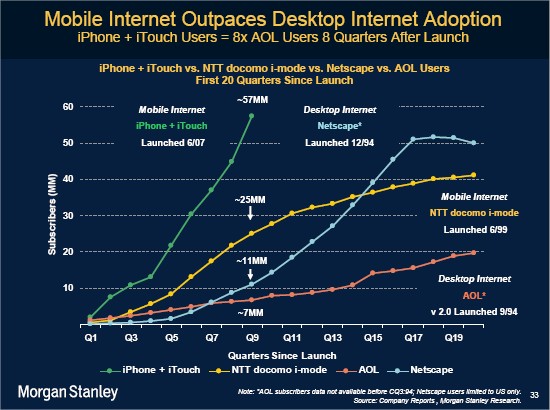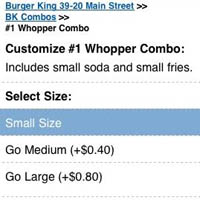Mobile To Outpace Desktop Web By 2013

Looking ahead to 2014, Gartner estimates that 3 billion of the world’s adult population will be able to conduct transactions via mobile or Internet technology.
Mobile phones will overtake PCs as the most common Web access devices worldwide by 2013, according to a new forecast by research firm Gartner. That’s an even more aggressive outlook than Morgan Stanley’s projection that the mobile Web will outstrip the desktop Web in five years.
Gartner estimates the combined installed base of smartphones and browser-equipped enhanced phones will surpass 1.82 billion units by 2013, eclipsing the total of 1.78 billion PCs by then.
But the firm warns that many sites still are not optimized for the mobile Web, even though cell users expect to make fewer clicks on their phones than on a PC. To successfully expand into mobile, publishers will have to reformat sites from the small form-factor of handheld devices.
Looking ahead to 2014, Gartner estimates that 3 billion of the world’s adult population will be able to conduct transactions via mobile or Internet technology. “Cash transactions will remain dominant in emerging markets by 2014, but the foundation for electronic transactions will be well underway for much of the adult world,” according to the firm.
In a more qualitative prediction, Gartner says that by 2015, context will be as key to mobile consumer services and relations as search engines are to the Web. Where search provides the key method for organizing information and services on the Internet, context will be critical to delivering personalized user experiences on smartphones.
“Context will center on observing patterns, particularly location, presence and social interactions. Furthermore, whereas search was based on a ‘pull’ of information from the Web, context-enriched services will, in many cases, prepopulate or push information to users,” stated the report. New offerings like Google’s “Near me now” feature — providing information on nearby business and services based on a mobile user’s location — come to mind in that vein.
Gartner added that any Web company that doesn’t become a mobile context provider risks handing over customer ownership to a competitor that is providing location-aware or other services that create context for users. As Gartner expects Facebook to be the hub of the social Web by 2012 (it’s not already?), it should also play a key role in social networking to mobile phones.
Three important issues are raised in the article by MediaPost on the Gartner research.
1. Most companies have not optimized their websites for the Mobile Web. To have a good presence on the Mobile Web, an adjusted website for the device must be set in place.
2. Context will be key for mobile just as search engines are for the Web. The context will be able to service the user personalized relevant content (in time).
3. Search engines were based upon pulling information to users at their request, mobile on the other hand will be able to prepopulate or push information on unique aspects as the context, the person and content wanted at that point of time.
Companies need to start thinking about any implications the Mobile Web might have for their business and target groups. Fast consecutive occuring life-cycles will make it much more difficult to intervene when the mobile has come to its peak of importance. A technology like Augmented Reality, which is going to grow the coming years, will even grow further by this, where it could be possible that Proximity Marketing will have a second more contextually relevant chance. Last but not least, this could impact media convergence as well, where TV, PC and Mobile will blend into new cross-media experiences which shall depend much on Mobile as well.
What is your take on this?
Source: Gartner Research



